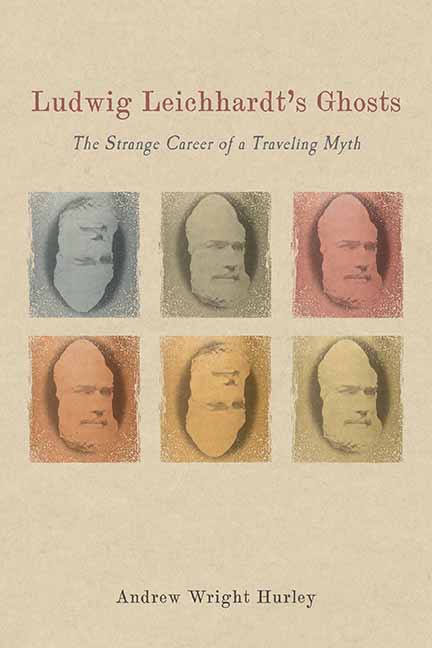Book contents
- Frontmatter
- Dedication
- Contents
- List of Illustrations
- Acknowledgments
- Introduction
- Part I Colonial Entanglements
- 1 Discovering, Mourning, and Honoring Leichhardt between Australia and German-Speaking Europe, 1848–1858
- 2 Ferdinand Mueller, the Ladies Committee, and German-Australian Seekers of Leichhardt
- 3 Taking Leichhardt Home to Germany with Georg Neumayer
- 4 Uneasily Approaching the Centenary
- Part II Colonial Memories
- 5 An Interwar Interregnum, or Finding Leichhardt as a “Friend of the Aborigine”?
- 6 Nazi Leichhardt
- 7 Leichhardt the Cold Warrior
- 8 Leichhardt Explodes, with No End in Sight (including a concluding passage “The Ghost of a Chance”)
- Notes
- Works Cited
- Index
- Frontmatter
- Dedication
- Contents
- List of Illustrations
- Acknowledgments
- Introduction
- Part I Colonial Entanglements
- 1 Discovering, Mourning, and Honoring Leichhardt between Australia and German-Speaking Europe, 1848–1858
- 2 Ferdinand Mueller, the Ladies Committee, and German-Australian Seekers of Leichhardt
- 3 Taking Leichhardt Home to Germany with Georg Neumayer
- 4 Uneasily Approaching the Centenary
- Part II Colonial Memories
- 5 An Interwar Interregnum, or Finding Leichhardt as a “Friend of the Aborigine”?
- 6 Nazi Leichhardt
- 7 Leichhardt the Cold Warrior
- 8 Leichhardt Explodes, with No End in Sight (including a concluding passage “The Ghost of a Chance”)
- Notes
- Works Cited
- Index
Summary
THERE IS SOMETHING PECULIAR about wandering around an ex-cemetery on a hot day, looking for a memorial to someone who was not even buried here. Between 1868 and 1912, over ten thousand colonists were buried at what is today Pioneers Memorial Park in the Sydney suburb of Leichhardt. How many Indigenous bodies might have been interred here, before or after 1868, is not recorded. Not that there is much evidence of any of them now, other than a vaguely disconcerting, funereal air. The gravestones were removed prior to 1922, when the allotment opened to the people of Leichhardt for their recreational enjoyment. It became a largely indiscernible mass grave, marked only by a small plaque behind the entrance arch, advising: “Particulars concerning the interments in the area may be obtained on application to the Leichhardt Town Hall.”
The iconic Prussian scientist and explorer Ludwig Leichhardt (1813– 48?) probably never visited this place, least of all when it was operating as a cemetery. He had most likely been dead twenty years before it opened. In the few years that Leichhardt had spent in the colony of New South Wales, he and a party of European and Indigenous men had gained fame for traveling from Moreton Bay (now Brisbane, Queensland) to Port Essington (Northern Territory) in 1844–45, but then he had perplexed the world by completely disappearing two years later, during an attempt to overland to the west coast. But Leichhardt is here in spirit at the Memorial Park. Apparently a tree was dedicated to him in 1963 to commemorate his sesquicentennial, and that is what I am looking for today. It is an obvious spot: a site in the municipality of Leichhardt officially dedicated to remembering pioneers. Yet the choice is filled with irony. The first thing you see after entering is a memorial to the “Men of Leichhardt” who served and died in the First World War—another set of absent bodies. How might they have felt about coming from Leichhardt, and fighting against Leichhardt's German countrymen? At a time when German-Australian relations reached their nadir, with Germans and German-Australians interned, and place names (although not Leichhardt in Sydney) erased, but conversely also when a surprisingly large number of men of German extraction served as Australian soldiers?
- Type
- Chapter
- Information
- Ludwig Leichhardt's GhostsThe Strange Career of a Traveling Myth, pp. 1 - 14Publisher: Boydell & BrewerPrint publication year: 2018



